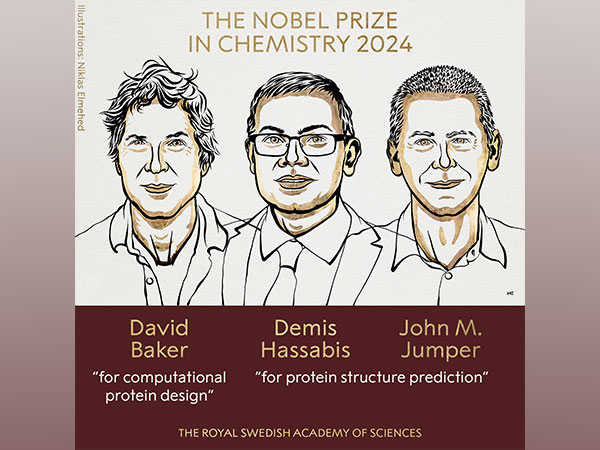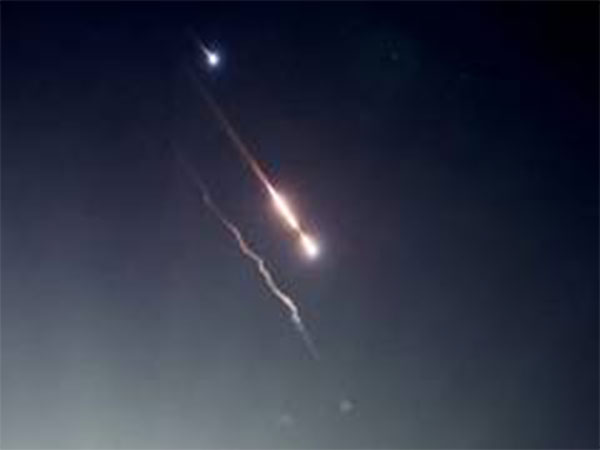Stockholm [Sweden], October 9 (ANI): The 2024 Nobel Prize in Chemistry has been awarded to David Baker, Demis Hassabis, and John M. Jumper, the Royal Swedish Academy of Sciences announced on Wednesday.
The prize is divided into two halves, with one half awarded to David Baker for his work on “computational protein design” and the other half jointly awarded to Demis Hassabis and John M. Jumper for their discoveries in “protein structure prediction,” according to the Academy.
The Academy noted that both awardees had “cracked the code for proteins’ remarkable structures,” with Baker successfully creating entirely new types of proteins, while Hassabis and Jumper developed an artificial intelligence model that solved a 50-year-old problem of predicting complex protein structures, offering significant potential for understanding protein structures.
Proteins typically consist of 20 different amino acids, often referred to as the building blocks of life. In 2003, David Baker used these blocks to design a new protein unlike any previously seen. Since then, his research group has generated numerous innovative protein designs, including proteins that can serve as pharmaceuticals, vaccines, nanomaterials, and tiny sensors.
The second discovery relates to the prediction of protein structures. In proteins, amino acids are linked together in long chains that fold into three-dimensional structures, which are crucial for their function. Since the 1970s, researchers have struggled to predict protein structures from amino acid sequences, a task that was “notoriously” difficult. However, a significant breakthrough occurred four years ago.
In 2020, Demis Hassabis and John M. Jumper introduced an AI model called AlphaFold2, which has enabled the prediction of the structure of nearly all 200 million proteins identified by researchers. Since its introduction, AlphaFold2 has been used by over two million people from 190 countries. This model has had wide-ranging applications, including aiding research into antibiotic resistance and creating images of enzymes that can break down plastic.
“One of the discoveries recognised this year involves the construction of extraordinary proteins. The other fulfils a 50-year-old dream: predicting protein structures from amino acid sequences. Both discoveries open up immense possibilities,” said Heiner Linke, Chair of the Nobel Committee for Chemistry.
The diversity of life underscores proteins’ incredible ability as chemical tools. They control and drive all the chemical reactions that underpin life. Proteins also act as hormones, signalling molecules, antibodies, and the building blocks of various tissues.
The Swedish Royal Academy will award 11 million Swedish kronor to the laureates, with half going to David Baker and the other half shared by Demis Hassabis and John M. Jumper. (ANI)
Disclaimer: This story is auto-generated from a syndicated feed of ANI; only the image & headline may have been reworked by News Services Division of World News Network Inc Ltd and Palghar News and Pune News and World News
HINDI, MARATHI, GUJARATI, TAMIL, TELUGU, BENGALI, KANNADA, ORIYA, PUNJABI, URDU, MALAYALAM
For more details and packages

















